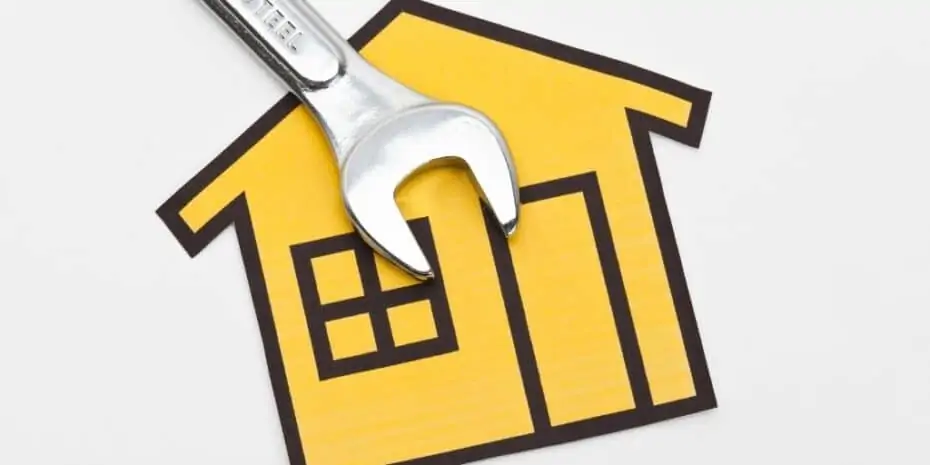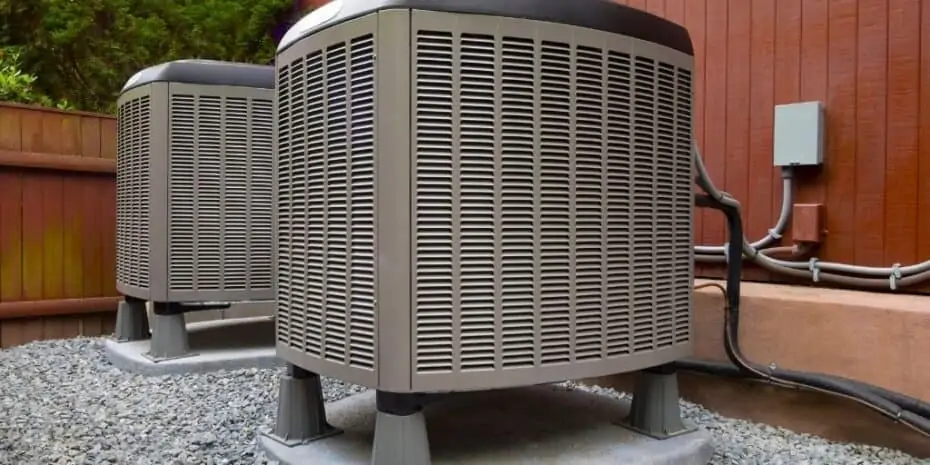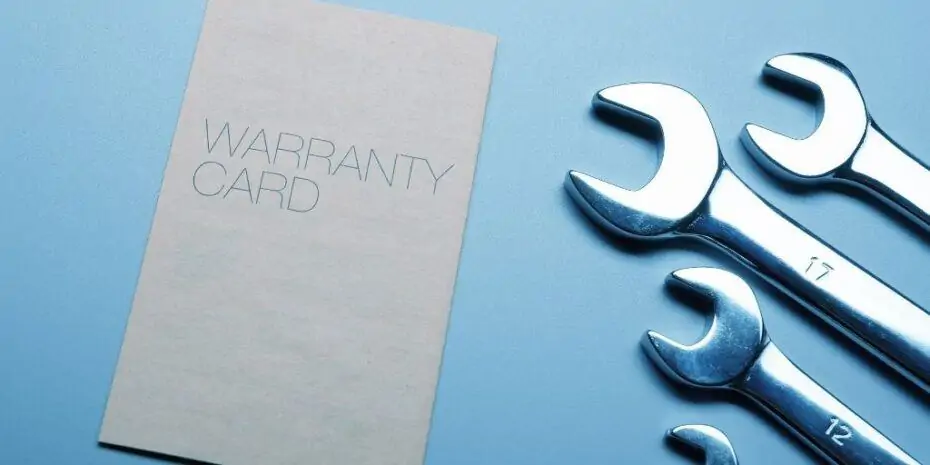What Is a Home Warranty?
How Does a Home Warranty Work?

When a home system or appliance breaks down, the homeowner gets in touch with the home warranty provider to look at the problem. The home warranty company does not directly handle the inspection; they send a third-party home service provider from its network instead.
This third party evaluates the damage and submits a report to the provider, who then reads the assessment and verifies whether the service contract covers the problem system or appliance.
If the broken component is covered, the home warranty company approves the claim. It coordinates with a competent contractor to repair the problem or replace the whole thing if necessary. The policyholder pays the agreed-on fee for the service call.
But if the broken component is deemed not under the home warranty, the warrantor rejects the claim. The policyholder has to use an insurance policy or a different service contract to cover the expense. If all else fails, the policyholder has to pay for it out of pocket.
Home Warranty vs. Homeowners’ Insurance
Many people confuse home warranties with homeowners’ insurance policies. However, they are fundamentally different. An easy way to distinguish them is that home warranties cover what will happen, whereas homeowners’ insurance policies cover what could happen.
Home warranty protection kicks in when something goes wrong in the house under normal circumstances. On the other hand, standard homeowners’ insurance provides policyholders financial protection from any loss caused by natural disasters, fire, vandalism, or theft. This contract between the policyholder and the insurance carrier helps the former avoid personal liability for any injury or property damage suffered by others[1].
Home insurance is also generally required by traditional financing. A home warranty, however, is optional[2].
The distinction between these two types of contracts is clear, but they have the same structure. Premiums, deductibles, limits, exclusions, and claims are their mutual elements.
Since home warranties and home insurance policies cover different things, they can be useful together. Either can serve as a safety net for homeowners who want to financially shield themselves from the possibilities that can render their residential properties less livable.
Home Warranty Coverage
The coverage of home warranties can vary from provider to provider, and it is common for warranty providers to break up their coverage by appliances and systems[3]. They do, however, offer plans that combine both.
These are the common systems and appliances covered under many plans:
|
Appliances |
Systems |
| Built-in microwaves | Central air conditioning equipment |
| Ceiling fans | Heating units (e.g., furnaces) |
| Dishwashers | Electrical components |
| Instant water dispensers | Water heaters |
| Refrigerators | Plumbing fixtures |
| Smoke detectors | Ductwork |
| Cooktops, stoves, ranges, and ovens | Garbage disposal |
| Freestanding ice makers | |
| Washing machines and dryers | |
| Doorbells | |
| Garage door openers | |
| Trash compactors |
More often than not, these service contracts include optional coverage for specialty items and/or specific needs. Below are some of the add-ons home warranty providers may offer.
- Door rekeying services
- Minor roof leaks
- Extended electronic warranty
- Food waste caused by a broken fridge
- Secondary HVAC units
- Septic pumps
- Spa equipment
- Swimming pools
- Well pumps
The basic coverage of home warranties is not universal. What one provider considers a standard offering may cost extra from another. In addition, the features of some plans can be more extensive than those of the others even if the cost of their premiums is practically the same.
Not all home warranty companies explicitly advertise the specific items they are willing to cover. Without reading the fine print and understanding the most important coverage details, unsuspecting customers may commit prematurely without setting their expectations.
What Does a Home Warranty Not Cover?
Home warranties can have long lists of exclusions. In general, home warranty protection is useless when:
- The problem is a pre-existing condition. A pre-existing condition can be defined in two ways: a problem identified during a home inspection before the property was bought or a problem that occurred prior to the validity of a service contract.
- Incorrect installation or improper maintenance. Any damage arising from poor workmanship due to a third party’s shortcoming is not a responsibility of a home warranty provider.
- The faulty system or appliance is used for purposes other than residential use. Any issue stemming from misuse is disqualified under most home warranty plans. Usually, this is the case when an otherwise covered item is used for commercial activity.
- The problem is cosmetic in nature. Home warranty protection has nothing to do with aesthetics. Instead, it aims to restore the functionality of a home system or an appliance. Any claim that does not concern the utility of a covered item generally results in denial. However, a new concept called aesthetic impairment may improve the traditional cosmetic damage exclusion more widely in the future[4].
- The problem violates building regulations. When a home feature is not up to code to begin with, a warrantor is unlikely to include it in the agreement.
- Homeowners’ insurance covers the item. Home warranties and homeowners’ insurance policies do not typically have overlapping coverages. The companies that provide them make it a point to avoid what the other usually covers.
- Manufacturer’s warranties cover the item. Home warranty protection is designed for items not protected by any other similar service contract. Therefore, it is often intended for older home systems and appliances.
How Much Does a Home Warranty Cost?
The actual cost of a home warranty depends on multiple factors. Coverage comprehensiveness is the biggest one.
The annual premium of home warranty protection with basic coverage ranges from $300 to $600. Extended coverage can set back the policyholder anywhere between $100 and $500 more. Home warranties have limits, and going over them would mean an additional expense for the policyholder.
A home warranty does not preclude all expenses from the policyholder. They need to shell out some cash to help cover the fee of the servicing contractor, called the service call fee (also known as trade call fee)[5]. Like an insurance deductible, this fee is an out-of-pocket expense the policyholder has to shoulder to set a repair or replacement project in motion. This fee is predetermined and fixed, and it can be as little as $50 or as high as $100.
If the cost of repair or replacement is less than the service call fee, most warranty providers will instead ask the policyholder to pay for it out of pocket. In addition, if different specialists are needed to fix all broken covered items, the policyholder may have to pay each contractor a separate service call fee.
Who Is a Home Warranty For?
Many real estate market participants can benefit from home warranty protection.
Residential Property Sellers
Not all homeowners who intend to list their properties on the market are inclined to purchase a home warranty in order. They skip it to pocket as much profit as possible or minimize their potential loss.
However, sellers of older houses (which can be a hard sell) may use a home warranty to sweeten the pot. It can act as a risk-mitigating tool that can turn hesitant bidders into serious buyers.
Home warranty protection has been attractive not just to private residential property sellers. Companies that buy properties for resale have used multi-year service contracts to make their inventories more marketable[6].
Real Estate Agents
Real estate agents representing selling parties may use home warranty protection as part of their bigger strategy to close deals as fast as possible.
Home warranty premiums can offset a portion of agents’ commissions. That is why they tend to rely on service contracts only when they feel the need to raise the stock of less popular properties with risk-averse homebuyers.
Owner-Occupants
Using a home warranty for personal residence can be a wise move when other service contracts from homebuilders, home improvement contractors, and/or appliance manufacturers have expired.
Landlords
Absentee owners like landlords are responsible for maintaining the properties they do not consider their permanent residence. While home warranty protection may not offer savings per se, service contracts can help landlords budget more efficiently by keeping their cash flow stable.
Compared to owner-occupants, landlords may feel more pressure to spend on home warranty protection. These absentee owners cannot afford to put off any necessary repair and replacement on their rental properties due to lack of cash on hand[7].
Takeaways
Home warranty protection provides protection for issues in major systems and appliances in residential properties. Despite working practically the same as standard homeowners’ insurance policies, home warranties do not offer personal liability protection.
While the coverages of home warranty plans can be worlds apart, many of them offer add-ons for extended protection. They can cost hundreds of dollars a year, but they can make service calls significantly more affordable and manageable. Home warranties directly benefit property owners, but private sellers and real estate agents can use these protection plans for their own ends.
Sources
- Insurance Information Institute. (n.d.) What is homeowners insurance? Retrieved from https://www.iii.org/article/what-homeowners-insurance
- 2-10 Home Buyers Warranty. (n.d.) When Can You Purchase a Home Warranty. Retrieved from https://www.2-10.com/homeowners-warranty/when-can-you-purchase-a-home-warranty/
- Mendoza, M. (2018). The Cosmetic Damage Exclusion: Time for a Change. Retrieved from https://www.claimsjournal.com/news/national/2018/04/09/284015.htm
- Robertson, C. (2018). ZHome Lets You Sell Your Current Home in 24 Hours So You Can Buy a Brand New One. Retrieved from https://www.thetruthaboutmortgage.com/zhome-lets-you-sell-your-current-home-in-24-hours-so-you-can-buy-a-brand-new-one/
- Laurino, V. (2020.) WHY DO SERVICE COMPANIES CHARGE FOR A SERVICE CALL FEE? Home Improvement Contractors of Staten Island. Retrieved from https://www.hicofsi.org/blog/why-do-service-companies-charge-for-a-service-call-fee
- This Old House. (n.d.) What Does a Home Warranty Cover? Retrieved from https://www.thisoldhouse.com/home-finances/21234965/home-warranty-coverage
- Bortz, D. (2018). 7 Common Landlord Responsibilities All Tenants Should Know. Retrieved from https://www.realtor.com/advice/rent/common-landlord-responsibilities/







